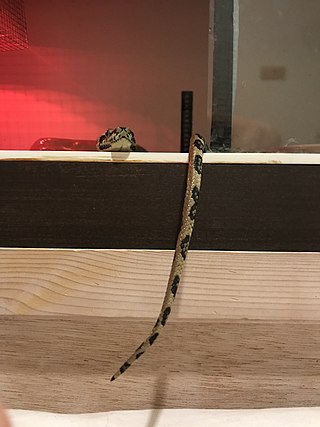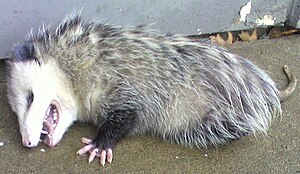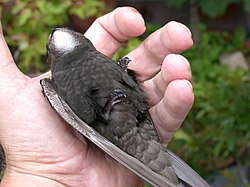
Ethology is a branch of zoology that studies the behaviour of non-human animals. It has its scientific roots in the work of Charles Darwin and of American and German ornithologists of the late 19th and early 20th century, including Charles O. Whitman, Oskar Heinroth, and Wallace Craig. The modern discipline of ethology is generally considered to have begun during the 1930s with the work of the Dutch biologist Nikolaas Tinbergen and the Austrian biologists Konrad Lorenz and Karl von Frisch, the three winners of the 1973 Nobel Prize in Physiology or Medicine. Ethology combines laboratory and field science, with a strong relation to neuroanatomy, ecology, and evolutionary biology.

Fear is an intensely unpleasant primal emotion in response to perceiving or recognizing a danger or threat. Fear causes psychological changes that may produce behavioral reactions such as mounting an aggressive response or fleeing the threat. Fear in human beings may occur in response to a certain stimulus occurring in the present, or in anticipation or expectation of a future threat perceived as a risk to oneself. The fear response arises from the perception of danger leading to confrontation with or escape from/avoiding the threat, which in extreme cases of fear can be a freeze response.

Predation is a biological interaction where one organism, the predator, kills and eats another organism, its prey. It is one of a family of common feeding behaviours that includes parasitism and micropredation and parasitoidism. It is distinct from scavenging on dead prey, though many predators also scavenge; it overlaps with herbivory, as seed predators and destructive frugivores are predators.

Animal communication is the transfer of information from one or a group of animals to one or more other animals that affects the current or future behavior of the receivers. Information may be sent intentionally, as in a courtship display, or unintentionally, as in the transfer of scent from predator to prey with kairomones. Information may be transferred to an "audience" of several receivers. Animal communication is a rapidly growing area of study in disciplines including animal behavior, sociology, neurology and animal cognition. Many aspects of animal behavior, such as symbolic name use, emotional expression, learning and sexual behavior, are being understood in new ways.

The fight-or-flight or the fight-flight-freeze-or-fawn is a physiological reaction that occurs in response to a perceived harmful event, attack, or threat to survival. It was first described by Walter Bradford Cannon. His theory states that animals react to threats with a general discharge of the sympathetic nervous system, preparing the animal for fighting or fleeing. More specifically, the adrenal medulla produces a hormonal cascade that results in the secretion of catecholamines, especially norepinephrine and epinephrine. The hormones estrogen, testosterone, and cortisol, as well as the neurotransmitters dopamine and serotonin, also affect how organisms react to stress. The hormone osteocalcin might also play a part.

Anti-predator adaptations are mechanisms developed through evolution that assist prey organisms in their constant struggle against predators. Throughout the animal kingdom, adaptations have evolved for every stage of this struggle, namely by avoiding detection, warding off attack, fighting back, or escaping when caught.

Escape response, escape reaction, or escape behavior is a mechanism by which animals avoid potential predation. It consists of a rapid sequence of movements, or lack of movement, that position the animal in such a way that allows it to hide, freeze, or flee from the supposed predator. Often, an animal's escape response is representative of an instinctual defensive mechanism, though there is evidence that these escape responses may be learned or influenced by experience.

Poison shyness, also called conditioned food aversion, is the avoidance of a toxic substance by an animal that has previously ingested that substance. Animals learn an association between stimulus characteristics, usually the taste or odor, of a toxic substance and the illness it produces; this allows them to detect and avoid the substance. Poison shyness occurs as an evolutionary adaptation in many animals, most prominently in generalists that feed on many different materials. It is often called bait shyness when it occurs during attempts at pest control of insects and animals. If the pest ingests the poison bait at sublethal doses, it typically detects and avoids the bait, rendering the bait ineffective.

Agonism is a broad term which encompasses many behaviours that result from, or are triggered by biological conflict between competing organisms. Approximately 23 shark species are capable of producing such displays when threatened by intraspecific or interspecific competitors, as an evolutionary strategy to avoid unnecessary combat. The behavioural, postural, social and kinetic elements which comprise this complex, ritualized display can be easily distinguished from normal, or non-display behaviour, considered typical of that species' life history. The display itself confers pertinent information to the foe regarding the displayer's physical fitness, body size, inborn biological weaponry, confidence and determination to fight. This behaviour is advantageous because it is much less biologically taxing for an individual to display its intention to fight than the injuries it would sustain during conflict, which is why agonistic displays have been reinforced through evolutionary time, as an adaptation to personal fitness. Agonistic displays are essential to the social dynamics of many biological taxa, extending far beyond sharks.

Matutinal, matinal, and matutine are terms used in the life sciences to indicate something of, relating to, or occurring in the early morning. The term may describe crepuscular animals that are significantly active during the predawn or early morning hours. During the morning twilight period and shortly thereafter, these animals partake in important tasks, such as scanning for mates, mating, and foraging.

Nesting behavior refers to an instinct in animals during reproduction to prepare a place with optimal conditions for offspring. The nesting place provides protection against predators and competitors that mean to exploit or kill offspring. It also provides protection against the physical environment.

Autohaemorrhaging, or reflex bleeding, is the action of animals deliberately ejecting blood from their bodies. Autohaemorrhaging has been observed as occurring in two variations. In the first form, blood is squirted toward a predator. The blood of these animals usually contains toxic compounds, making the behaviour an effective chemical defence mechanism. In the second form, blood is not squirted, but is slowly emitted from the animal's body. This form appears to serve a deterrent effect, and is used by animals whose blood does not seem to be toxic. Most animals that autohaemorrhage are insects, but some reptiles also display this behaviour.

Fish fulfill several criteria proposed as indicating that non-human animals experience pain. These fulfilled criteria include a suitable nervous system and sensory receptors, opioid receptors and reduced responses to noxious stimuli when given analgesics and local anaesthetics, physiological changes to noxious stimuli, displaying protective motor reactions, exhibiting avoidance learning and making trade-offs between noxious stimulus avoidance and other motivational requirements.

Pain negatively affects the health and welfare of animals. "Pain" is defined by the International Association for the Study of Pain as "an unpleasant sensory and emotional experience associated with actual or potential tissue damage, or described in terms of such damage." Only the animal experiencing the pain can know the pain's quality and intensity, and the degree of suffering. It is harder, if even possible, for an observer to know whether an emotional experience has occurred, especially if the sufferer cannot communicate. Therefore, this concept is often excluded in definitions of pain in animals, such as that provided by Zimmerman: "an aversive sensory experience caused by actual or potential injury that elicits protective motor and vegetative reactions, results in learned avoidance and may modify species-specific behaviour, including social behaviour." Nonhuman animals cannot report their feelings to language-using humans in the same manner as human communication, but observation of their behaviour provides a reasonable indication as to the extent of their pain. Just as with doctors and medics who sometimes share no common language with their patients, the indicators of pain can still be understood.
Freezing behavior, also called the freeze response or being petrified, is a reaction to specific stimuli, most commonly observed in prey animals. When a prey animal has been caught and completely overcome by the predator, it may respond by "freezing up/petrification" or in other words by uncontrollably becoming rigid or limp. Studies typically assess a conditioned freezing behavior response to stimuli that typically or innately do not cause fear, such as a tone or shock. Freezing behavior is most easily characterized by changes in blood pressure and lengths of time in crouching position, but it also is known to cause changes such as shortness of breath, increased heart rate, sweating, or choking sensation. However, since it is difficult to measure these sympathetic responses to fear stimuli, studies are typically confined to simple crouching times. A response to stimuli typically is said to be a "fight or flight", but is more completely described as "fight, flight, or freeze". In addition, freezing is observed to occur before or after a fight or flight response.

Caudal luring is a form of aggressive mimicry characterized by the waving or wriggling of the predator's tail to attract prey. This movement attracts small animals who mistake the tail for a small worm or other small animal. When the animal approaches to prey on the worm-like tail, the predator will strike. This behavior has been recorded in snakes, sharks, and eels.
Animals have many different tactics for defending themselves, depending on the severity of the threat they are encountering. Stages of threat vary along a spectrum referred to as the "predatory imminence continuum", spanning from low-risk (pre-encounter) to high-risk (interaction) threats. The main assumption of the predatory imminence continuum is that as threat levels increase, defensive response strategies change. During the pre-encounter period, an animal may engage in activities like exploration or foraging. But if the animal senses that a predator is nearby, the animal may begin to express species specific defense reactions such as freezing in an attempt to avoid detection by the predator. However, in situations where a threat is imminent, once the animal is detected by its predator, freezing may no longer be the optimal behaviour for survival. At this point, the animal enters the circa-strike phase, where its behaviour will transition from passive freezing to active flight, or even attack if escape is not possible.
Deception in animals is the transmission of misinformation by one animal to another, of the same or different species, in a way that propagates beliefs that are not true.

Phagomimicry is a defensive behaviour of sea hares, in which the animal ejects a mixture of chemicals, which mimic food, and overwhelm the senses of their predator, giving the sea hare a chance to escape. The typical defence response of the sea hare to a predator is to release two chemicals - ink from the ink gland and opaline from the opaline gland. While ink creates a dark, diffuse cloud in the water which disrupts the sensory perception of the predator by acting as a smokescreen and as a decoy, the opaline, which affects the senses dealing with feeding, causes the predator to instinctively attack the cloud of chemicals as if it were indeed food. This ink is able to mimic food by having a high concentration of amino acids and other compounds that are normally found in food, and the attack behaviour of the predator allows the sea-hares the opportunity to escape.

The ecology of fear is a conceptual framework describing the psychological impact that predator-induced stress experienced by animals has on populations and ecosystems. Within ecology, the impact of predators has been traditionally viewed as limited to the animals that they directly kill, while the ecology of fear advances evidence that predators may have a far more substantial impact on the individuals that they predate, reducing fecundity, survival and population sizes. To avoid being killed, animals that are preyed upon will employ anti-predator defenses which aid survival but may carry substantial costs.

























